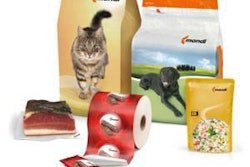Even the most sincere gestures can be misinterpreted and irresponsibly reported online, as the American Society for the Prevention of Cruelty to Animals found out after it released its new video in honor of Adopt a Cat Month. 'Hover Cat' taps into the cat viral video craze with a trendy message encouraging people to adopt the next viral video star. The movie stars Nightline anchor, Dan Harris, and his adopted feline.
Ariel Wulff, Contributing Editor at Pet Pardon News, saw the video and decided to write about it. Unfortunately, she did some serious assuming about how it was made.
"The ASPCA adoption video 'Hover Cat' is receiving backlash from the animal rights community due to the repeated tossing and dropping of a cat into the air, to achieve a floating effect," Ms. Wulff states. "The video is a series of still shots that are edited and repeated to achieve the desired effect. Most of the still shots are of the cat being dropped or thrown in the air."
Fortunately, that isn't how the effects were produced. Like most things in video, movies or TV, special effect tricks were used to achieve the final visual. Nothing as crude as "tossing" a live cat was done at all.
This is a situation that petfood brands have been in many times. There are always people who are more interested in shock value and attacks than the truth, which results in online statements being presented as facts with no factual basis. These false statements can then be repeated around the Web and suddenly the company finds itself in the middle of a PR nightmare that it didn't deserve.
We can learn from the ASPCA's response to this budding rumor. A representative posted a comment on Facebook to this story that effectively doused the rumor before the flames were fanned further.
Their response is a perfect example of the kind of social monitoring and management I've written about before. A critical part of your social marketer's job description should include actively searching for, and addressing, online statements made about your company. Facts wrapped up in empathy and decorum can go a long way toward clearing your name before irresponsible reporting does a number on it across the Internet.
Additionally, this situation demonstrates the opportunity to learn from social feedback. I'm willing to bet that the next ASPCA video will include a statement about no animals being harmed. If it uses special effects, they could include information that briefly explains how the effects were achieved.
It also serves as a reminder for companies to have policies in place for social marketing and public relations. These policies should include training in responsible reporting and fact verification for all statements published online, especially those that could be classed as slanderous.
The overwhelming amount of information available about online reputation management may discourage businesses from tackling it at all. Examples like this one demonstrate how simple and effective the practice really is. It truly comes down to an honest, straightforward representation of the facts shared in a professional manner. Silence puts your brand in the hands (and imagination) of others.















